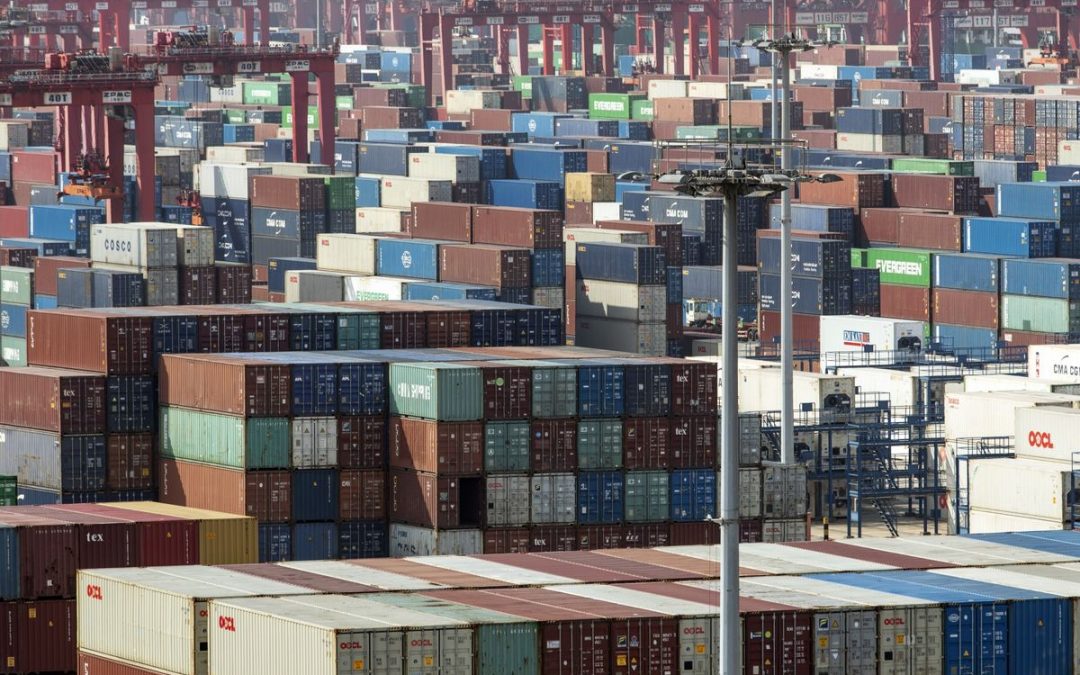Rates for shipping containers from east Asia and China to both US coasts surged this week following the successful implementation of general rate increases (GRIs), while container ships were starting to back up at West Coast ports after a breakdown in negotiations for a new labour agreement between dockworkers and the ports, highlighting this week’s logistics roundup.
According to online freight shipping marketplace and platform provider Freightos, GRIs implemented this week were partially successful.
Judah Levine, head of research at Freightos, said support for the GRIs could have come from concerns of slowdowns at West Coast ports amid renewed labour strife and the impact it could have on effective capacity.
Levine said higher rates to the East Coast could reflect low-water surcharges for container ships traversing the Panama Canal.
Container ships are relevant to the chemical industry because, while most chemicals are liquids and are shipped in tankers, container ships transport polymers such as polyethylene (PE) and polypropylene (PP), which are shipped in pellets.
PANAMA CANAL
The Panama Canal Authority began imposing new draft restrictions in April because of low water levels amid a drought.
The PCA lowered the maximum authorised draft to 47.5 feet from 50 feet for neopanamax vessels in April and lowered it further to 44.5 feet on 24 May and was scheduled to lower it to 44 feet on 30 May.
The PCA postponed implementation of the 44-foot restriction until 13 June after significant rainfall fell in the region and plans to lower it to 43.5 feet on 25 June.
WEST COAST LABOUR ISSUE
Container ships were backing up at West Coast ports amid allegations that union labourers were staging concerted and disruptive work actions after negotiations for a new labour agreement between dockworkers and the ports seemed to break down.
The union denied taking any actions, but as of Wednesday, there were six vessels in port whose exits were being delayed, and four vessels at anchor or due to arrive that were seeing delays in getting a berth.
The list was compiled by MESC staff where the agent specified by phone call or email that its delay was because of a labour shortage.
“Basically, every container vessel is having their schedule pushed back by about a day or two,” MESC said. “The main cause I have seen is due to lack of ‘lashers.’”
Lashers secure cargo on a vessel to avoid shifting.
MESC said that some agencies either did not want to comment as to the labour shortage being the reason for vessel delays, or the emails received containing schedules did not specify the reason for a delay.
The Port of LA said it saw minimal impact to some of its terminals on Friday but had to close the gate for the afternoon at one of the seven terminals in the complex on Monday.
A spokesperson for the port said all terminals were open and operating on Tuesday.
LIQUID TANKER SHIPPING
Liquid chemical tanker rates from the US outbound were stable to softer this week, with decreases seen from the US Gulf to Asia and from the US Gulf to Brazil.
Rates for liquid chem tankers from Brazil to Europe, Asia and the US Gulf rose as the country has more material available for export, which is putting upward pressure on rates.
TRUCKING
The trucking market remains soft amid soft consumer demand for goods following the Memorial Day holiday.
FTR Transportation Intelligence said they saw sharp drops in both spot volumes and truck postings because of the holiday.
Total load activity fell 14.1% – the largest drop of the year so far – following a decrease of nearly 8% in the previous week, FTR said.
Volume was almost 41% below the same week last year and about 23% below the five-year average, according to FTR.
But rates have shown an uptick recently.
Data from Freightwaves Sonar showed slight improvement in both spot and contract rates this week, as shown in the following chart.
Source: Hellenic Shipping News






